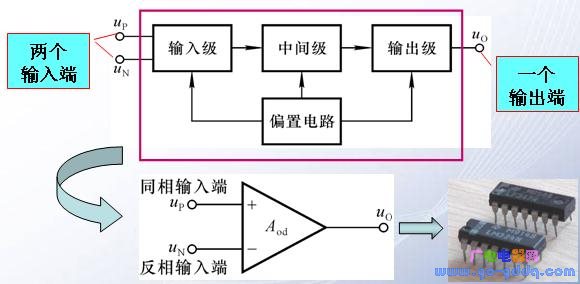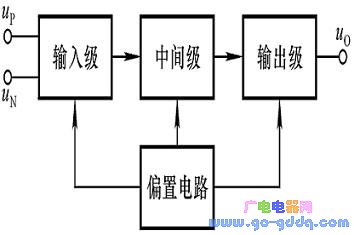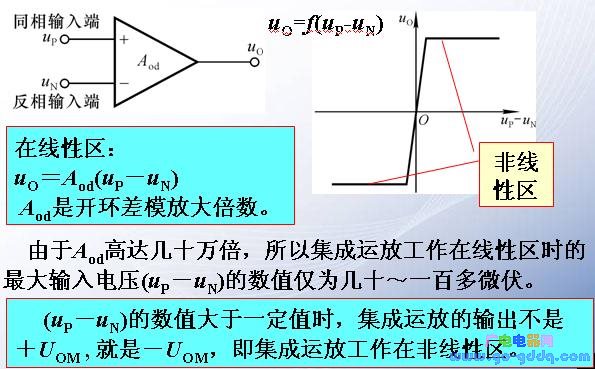1. Features of the Integrated Operational Amplifier The integrated operational amplifier, often referred to as an op-amp, is a high-performance direct-coupled multi-stage amplifier circuit. It was originally developed for use in signal processing and mathematical calculations, which led to its name. (1) It uses a direct coupling configuration, taking full advantage of transistor consistency by employing differential amplifier circuits and current source designs. This allows for better stability and performance across a wide range of frequencies. (2) Despite its complex internal structure, the manufacturing process remains relatively simple due to advanced semiconductor technology. This enables the creation of highly efficient amplifiers without increasing fabrication complexity. (3) Passive components are replaced with active ones where possible. For example, large resistors that are difficult to fabricate are substituted with transistors, improving precision and reducing space requirements. (4) The use of composite transistors (also known as compound transistors) enhances the overall gain and performance of the amplifier. 2. Structure of the Integrated Operational Amplifier Circuit If we consider an op-amp as a "black box," it can be modeled as a differential amplifier with two inputs and one output. This design allows for high common-mode rejection and excellent signal amplification capabilities. The Function of the Four Key Components in the Op-Amp Circuit Bias Circuit: Ensures each stage of the amplifier operates at the correct static point. A current source is typically used to provide stable biasing. Input Stage: Acts as the pre-amplifier, usually based on a differential amplifier. It requires a high input impedance (Ri), high differential gain (Ad), low common-mode gain (Ac), and strong voltage withstand capability at the input terminals. Intermediate Stage: Serves as the main amplification stage, often using a common-emitter or common-source configuration. It must provide sufficient gain to boost the signal before it reaches the output stage. Output Stage: Functions as the power stage, commonly implemented with a quasi-complementary output configuration. It needs a low output impedance (Ro) and a large undistorted output voltage swing. 4. Voltage Transfer Characteristics of the Integrated Operational Amplifier The voltage transfer characteristic shows how the output voltage changes in response to variations in the input voltage. It typically exhibits a linear region where the op-amp behaves ideally, followed by saturation regions when the output reaches its maximum or minimum limits. industrial computer,pc fanless,small industrial pc Guangdong ZhiPing Touch Technology Co., Ltd. , https://www.zhipingtouch.com


August 09, 2025